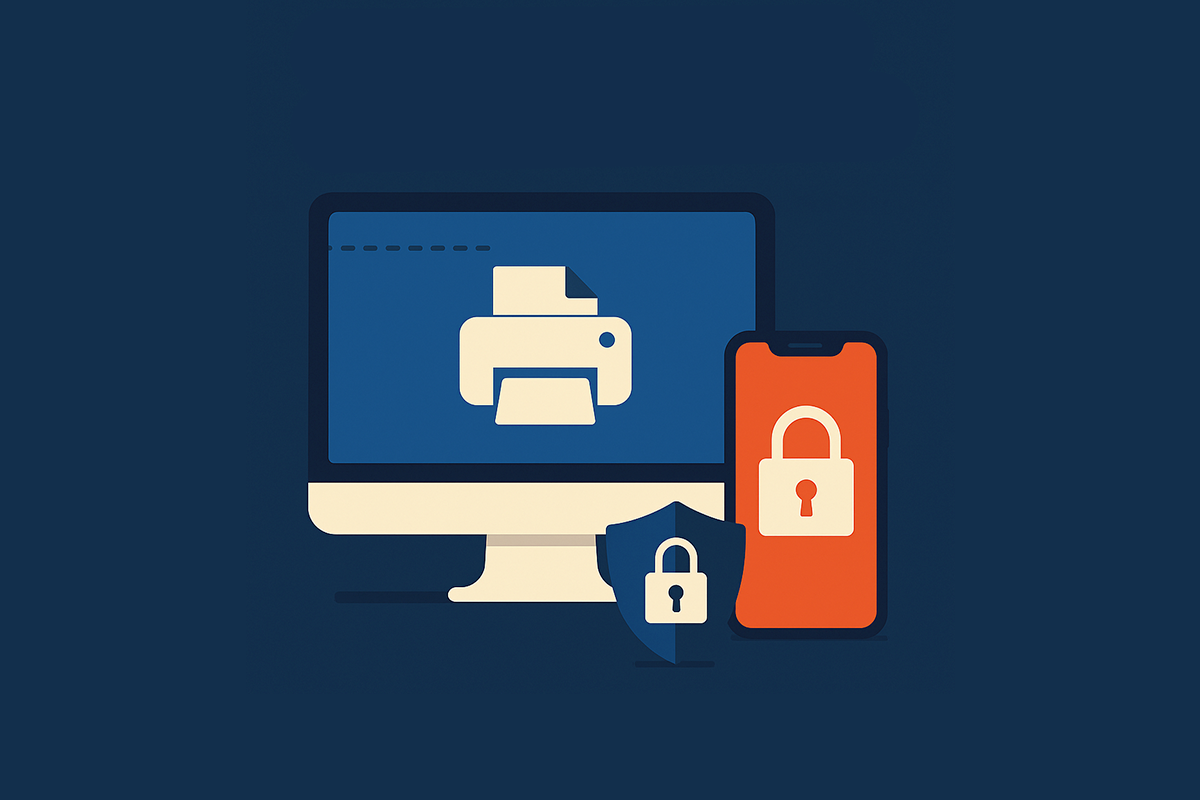What Makes a Print Partner Truly Secure? A Guide for Regulated Industries
Not all printers are created equal. Learn what defines a secure print partner and how regulated industries like finance and healthcare can reduce risk, ensure compliance, and protect sensitive data.

Print plays a fundamental role in most highly-regulated industries, including healthcare, finance, pharmaceuticals, and insurance. Of course, the specific types of documents being printed vary from operation to operation. However, if they contain any kind of sensitive or regulated information, then they universally require secure printing practices to protect that information and keep your organization on the right side of the law.
In this blog, you’ll learn about the current secure printing best practices, as well as how to assess a potential outsourced print partner’s ability to safeguard your sensitive information. Remember, if you ever have concerns about a commercial printer’s security practices, never hesitate to ask for more details. After all, both your clients’ privacy and your business’s future may well be on the line.
For a deeper comparison of printing options, check out our blog, In-House vs. Outsourced Printing: Which Is Safer for Sensitive Data?
What “Secure Printing” Really Means
Two angles must be considered for secure printing - physical and digital. Physical security refers to the policies, technology, and practices used to protect printing facilities and control access to physical printers and printed resources. A robust physical print security plan typically includes:
- Access controls to limit who can enter printing facilities and who can access printers and printed copies.
- Surveillance of printing facilities.
- Detailed access logs for both the print facilities and the printers themselves.
On the other hand, digital security refers to the policies, technology, and practices used to protect data sent to and stored on printing equipment. These types of security efforts include:
- End-to-end file encryption.
- User authentication via passwords, PINs, badges, etc.
- Audit trails that document the who, what, and when each time a file is accessed.
Regulatory Readiness: Compliance Beyond the Basics
Many privacy laws and regulations, such as HIPAA, require businesses to do more than just protect printed materials from being accessed by unauthorized parties. They also mandate detailed, up-to-date logs of:
- User access to sensitive data files.
- Whenever data files have been opened or closed.
- Creation, reading, editing, or deletion activity for sensitive data files.
- Successful and unsuccessful access attempts to access systems that house sensitive data files.
These logs must be available for potential audits by regulatory agencies. They also help organizations recognize normal patterns of user behavior, and flag unusual behavior for further scrutiny.
Signs of a Trustworthy Print Partner
So, how do you determine if a potential commercial print partner has what it takes to handle your confidential data? First, you can start by asking them to detail their background in secure printing and the specific measures they take to protect sensitive print files.
- What certifications and/or trainings have they completed related to print security?
- What physical security infrastructure (video surveillance, access controls, etc.) do they have in their facilities?
- What digital security measures (encryption, password protection, etc.) do they have for their file management systems and applications?
- What kinds of secure print projects have they successfully handled in the past?
In addition to asking questions, you can also inspect their web presence and communications for red flags regarding their security practices and policies, such as:
- Do they outsource any part of their print production?
- Are they unable to provide audit trails and other security documentation regarding your data files?
- Have they been scrutinized for data or security breaches in the past?
- Are they vague, evasive, or seemingly uninformed when asked about their physical and digital secure printing measures?
Signs of a Trustworthy Print Partner
At Wallace Carlson, we’ve implemented a comprehensive suite of security measures, both physical and digital, ensuring sensitive corporate, financial, and healthcare data is protected in our care. From surveillance and access monitoring in our print facilities, to the 256-bit SSL (Secure Sockets Layer) encryption of our file submission and management system, we strive to ensure no angle is overlooked regarding privacy protection and regulatory compliance. If you have any questions about our secure printing practices, we welcome you to reach out to our team directly today.
Conclusion
Work that stands out across time and industries
Looking for more insights on print marketing and design? Check out the latest blogs from Wallace Carlson for expert tips, industry trends, and strategies to elevate your brand.



